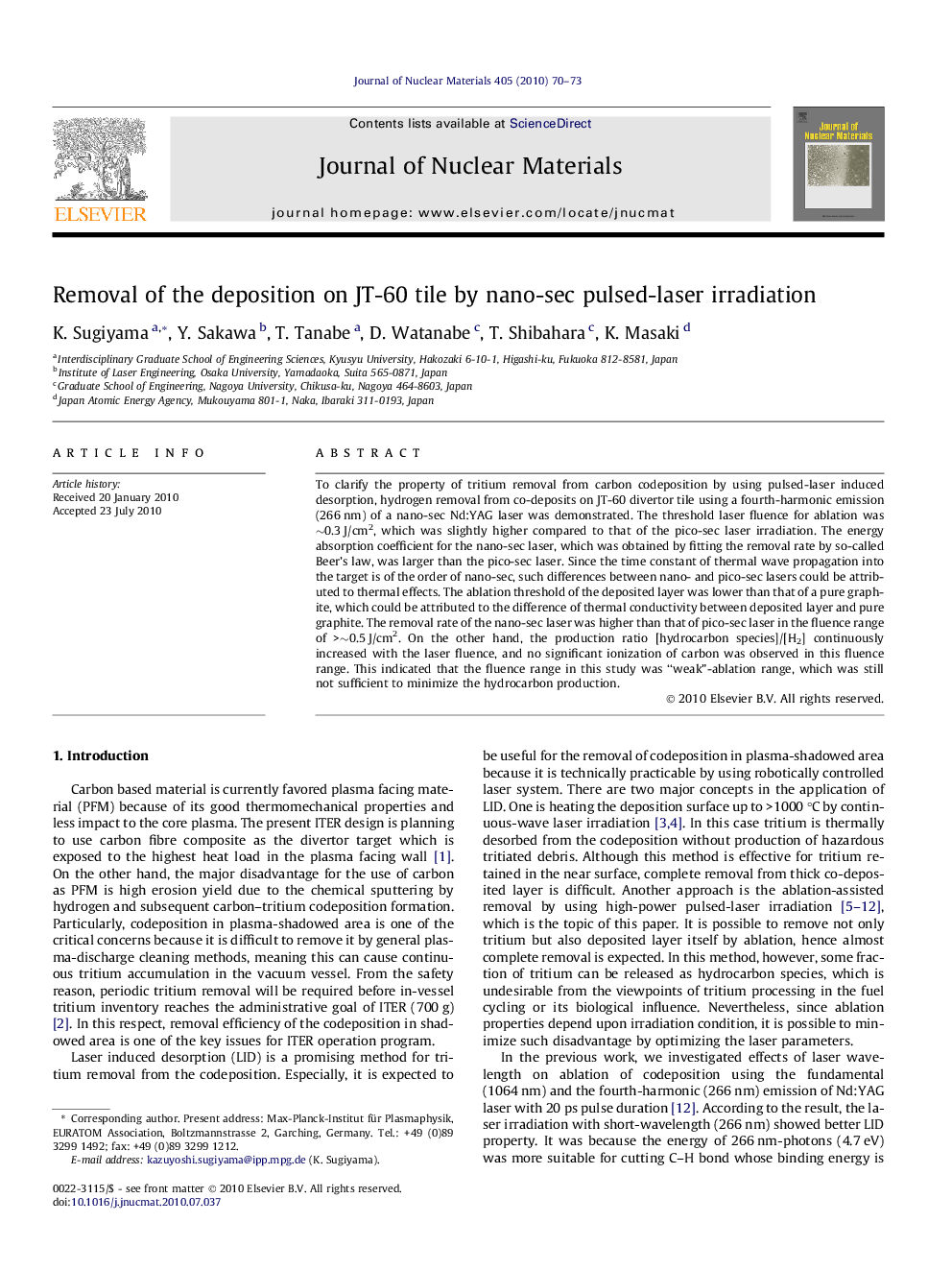| Article ID | Journal | Published Year | Pages | File Type |
|---|---|---|---|---|
| 1567670 | Journal of Nuclear Materials | 2010 | 4 Pages |
Abstract
To clarify the property of tritium removal from carbon codeposition by using pulsed-laser induced desorption, hydrogen removal from co-deposits on JT-60 divertor tile using a fourth-harmonic emission (266Â nm) of a nano-sec Nd:YAG laser was demonstrated. The threshold laser fluence for ablation was â¼0.3Â J/cm2, which was slightly higher compared to that of the pico-sec laser irradiation. The energy absorption coefficient for the nano-sec laser, which was obtained by fitting the removal rate by so-called Beer's law, was larger than the pico-sec laser. Since the time constant of thermal wave propagation into the target is of the order of nano-sec, such differences between nano- and pico-sec lasers could be attributed to thermal effects. The ablation threshold of the deposited layer was lower than that of a pure graphite, which could be attributed to the difference of thermal conductivity between deposited layer and pure graphite. The removal rate of the nano-sec laser was higher than that of pico-sec laser in the fluence range of >â¼0.5Â J/cm2. On the other hand, the production ratio [hydrocarbon species]/[H2] continuously increased with the laser fluence, and no significant ionization of carbon was observed in this fluence range. This indicated that the fluence range in this study was “weak”-ablation range, which was still not sufficient to minimize the hydrocarbon production.
Related Topics
Physical Sciences and Engineering
Energy
Nuclear Energy and Engineering
Authors
K. Sugiyama, Y. Sakawa, T. Tanabe, D. Watanabe, T. Shibahara, K. Masaki,
